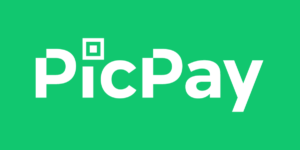This is an opinion editorial by Vishvas Garg, a Ph.D. in pharmacoeconomics, epidemiology, pharmaceutical policy and outcomes research from the University of New Mexico.
In a previous article, I introduced an idea of a new Bitcoin-enabled healthcare system. In this article, I discuss the details of my proposal by using a case example of the private insurance market in the United States. First, I describe the unmet needs in this private insurance market. Then, I discuss the idea of a new bitcoin-enabled, patient-centric health plan structured as a public good and a new electronic health-record system where patients own their data. The Bitcoin network creates an opportunity for patient-centric healthcare.
Patient’s Taking Back Their Data
Of the total data generated in the world, 30% is in healthcare. This data, including the patient’s own medical records, is owned by institutions. This healthcare data sit in silos in disparate health systems, making it difficult to access even by researchers for advancing research and development efforts in healthcare. In any patient-centric healthcare system, patients will own their data.
A Bitcoin-enabled innovative solution can deliver high-quality, equitable, patient-centric healthcare in an affordable manner to millions of Americans.
Satoshi Nakamoto wrote in the Bitcoin white paper, “Commerce on the Internet has come to rely almost exclusively on financial institutions serving as trusted third parties to process electronic payments.”
Insurance providers are financial institutions as well. I believe we can build a new integrated healthcare system that can deliver high-quality, equitable, patient-centric healthcare in an affordable manner.
The purpose of this Bitcoin-based innovative solution should be health empowerment.
We can start building this new system by developing a new electronic health-record (EHR) system based in Web5 and a Bitcoin-enabled health insurance product.
A New EHR System
Healthcare is the practice of data-driven science. The Centers for Disease Control and Prevention (CDC) categorizes the factors that influence health into: genetics, behavior, environmental and physical influences, medical care and social.
A traditional EHR contains patients’ medical information such as administrative and billing data, patient demographics, medical histories, medications, labs, etc. Most of this information is only a part of the factors that influence health.
Instead, a new EHR system can be designed to capture data on all factors that influence health. For instance, data can be captured via the healthcare providers, patients, caregivers, wearable devices, travel and food apps. Health can be entered by various parties including the patients, caregivers, wearable devices and the various types of apps such as for diet, weight management, travel, women’s health, etc.
This EHR system will be based in Web5, which is a decentralized web platform that uses bitcoin to revolutionize the commerce of the internet. Within Web5, the decentralized identifiers (DIDs) built on Bitcoin (e.g., via ION) can empower the patients to own their digital identity and secure their own data. The decentralized web nodes (DWNs) in Web5 can be the new standard for storing the health data and relaying that data enables entities of any type (patients, providers, etc.) to send and store HIPAA-compliant messages and information.
Through Fast Healthcare Interoperability Resource (FHIR), developers can build applications that can transcend the current document-based environment and enable access to data no matter what EHR operating system underpins the user’s infrastructure. This also means that the existing EHRs of the patients can be used as a foundation for the proposed system, hence significantly lowering the barrier to entry.
The main benefits of such a new EHR system are:
- Patient-centric healthcare system: Patients should own their data in any patient-centric healthcare system.
- Seamless patient care: A patient having the ability to seamlessly share their data with any healthcare provider of their choice will ensure continuity of care.
- Data on all determinants of health will drive higher-quality care: Having access to data on all factors that influence health can help enable and improve the quality of evidence-based medicine for each patient.
- Acceleration of development of new health technologies: Value-add services can be built atop this EHR system to promote research efforts for innovative, life-changing health technologies. The purpose of such services should always be to maximize patients’ health and optimize system efficiencies. Such services can also create new revenue streams for the key participating stakeholders.
- Waste reduction: Overall, it is estimated that about 25% of healthcare spending in the U.S. is wasted. Data-driven, value-add services can drive waste reduction by increasing system efficiency and cutting fraud and abuse.
A New Bitcoin-Enabled Health Plan
This health plan will have the following key characteristics:
- Operate as a public good: Like the internet, this insurance will operate as a public good making no profit. This public-good nature will make this the only plan available that will stand to benefit from driving the total cost of healthcare down versus up. This is because any savings will be directly passed on to the sponsors, which will make the plan more affordable. The more affordable the plan becomes, the stronger its value proposition is for expansion.
- Anyone who has access to the internet can enroll: This will allow the beneficiaries to be seen at a healthcare practice of their choice. This is important because not all healthcare practices will see uninsured patients or even take all health insurances. In this health plan, anyone can sponsor coverage for themselves or anyone else.
- Coverage and payments: Preventive care should be highly proactive and always offered without any out-of-pocket costs. The level of coverage for other healthcare services can be customized per the sponsor’s choice. Fairer credit products like “buy now, pay later” can be offered to help patients budget for the out-of-pocket portion of such healthcare expenses. Sponsors may also purchase a stop-loss coverage for larger health bills.
- The system will strongly encourage and reward evidence-based medicine (EBM). EBM is using the best research for making healthcare decisions. EBM can be strongly encouraged and rewarded on both the healthcare provider (HCP) and patient levels.
- Preventive care and early intervention. Practicing EBM will strongly encourage proactive and preventive care, which is always the best option for healthcare. After preventive care, the second-best option to maximize health is always early intervention. The system should also strongly promote EBM-based early intervention.
The network is the strongest protection for any insurance system. The bigger the network, the easier it is to distribute the risk of health-related expenditures among the entire base of enrollees. As the patient and provider networks of the proposed health plan grow, many synergies and innovations can be realized such as stronger bargaining power with providers and economies of scale in operating expenses. Through preventive care and early intervention, the population will become healthier, translating into lower total cost of care and, consequently, lowering the cost of health plans. All of this can help build an unparalleled affordable, high-quality and equitable health plan for millions of Americans.
Hypothetical Example Of The Bitcoin Health Plan
As displayed in the figure below, this health plan can be designed as a self-funded or level-funded insurance product. In this insurance type, the sponsors are eligible to receive back or roll over the unused premium contributions made by them. This creates a financial incentive to keep the sponsored persons healthy. The sponsor can also customize the benefits design.
Currently, 64% of workers are in a self-funded plan in the U.S. However, at small firms (three -199 workers) only 21% are in a self-funded plan versus 82% at large firms (200+ workers). Even the large, self-insured employers — where the workers are covered through a self-funded plan — lack the power to effectively negotiate high hospital prices.
Level-funded plans are a newer hybrid option where the firms — usually small and mid-sized — can take advantage of a comparatively nominal, self-funded option while attaching a stop-loss coverage for high medical expenses.
Irrespective of the firm size, the current self-funded or level-funded plans do not meet the needs of the current employers. The cost of healthcare insurance has gone up every single year for at least the last two decades. In fact, after payroll, health insurance is the second biggest employee-related expense for an employer, with an average health plan costing $22,221 for family coverage in 2021. Hence, lowering the insurance costs can not only enable more employers to afford health insurance, but can also increase the competitiveness of the businesses.
85% of the collected premiums can be allocated towards paying medical bills and improving quality of care. The latter can include bitcoin rewards to patients for continuously improving their health and to healthcare providers for delivering high-quality care. The remaining 15% of premiums can be used for operating expenses and investing in bitcoin mining.
The 85/15% assumption can be varied to optimize the plan design. The same is currently based on the Affordable Care Act rule of 85/15 for traditional fully insured plans through which millions of Americans currently get health coverage.
The key characteristics of the health plan proposed in the previous section will drive long-term savings. Examples of medical care and quality improvements:
- EBM: In the near term, 10% savings is likely achievable, while greater savings can be expected in the long term. As an example, a platform that enables EBM in Medicare Advantage plans has demonstrated over 1,100 basis points differential in medical care ratios.
- Bargaining power: Empirical evidence suggests that increasing market concentration of both insurance providers and hospitals in any given market is associated with more bargaining power.
- Reducing waste: Mentioned above, if even 20-40% of this total waste can be eliminated, it will translate into 5-10% savings.
The remaining 15% of premiums paid can be allocated as follows:
- Operating expenses: Running the health plan as a public good will incur operating expenses. I assume these to be at around 10%, but this number can be lower or higher. To operate in an asset-lite model, third-party administrators (TPAs) can be leveraged. The TPAs can process or adjudicate claims, collect premiums, contract for healthcare services, provide utilization review of claims and similar ancillary services to the operation of the benefit plan.
- Bitcoin mining: The remaining amount from the premiums paid can be invested into bitcoin mining. This will have two benefits: It will strengthen the security of the Bitcoin network and the mining rewards can be used as a unique revenue stream to supplement the growth of the insurance network through offering referral bonuses and more.
Biometric screenings can be leveraged to establish person-specific goals for health and wellness promotions with bitcoin rewards. In 2021, 26% of small firms and 38% of large firms provided opportunities for biometrics screening to their workers. Using these person-specific goals, bitcoin rewards can be offered for quality improvement purposes to incentivize those who continue to improve their health and wellbeing. The beneficiaries can apply these rewards against future healthcare expenditures.
Similarly, rewards for providers can be built for improving quality. As an example, established metrics such as the quality measures used by the Centers for Medicare and Medicaid Services can be used to define high-quality care.
Value-Added Services
Value-added services are the most dynamic part of this proposal. As the network grows, more innovative services can be built to maximize the participants’ health and optimize the system’s efficiency. Some examples are services for improving quality, accelerating research and development, optimizing system efficiency and lowering the enormous administrative burden.
Role Of Bitcoin
Bitcoin will play many roles in this proposal. Some key examples are:
- Making healthcare delivery patient-centric by enabling decentralized identity and giving ownership of the data back to the patients.
- Improving quality of care and reducing healthcare costs through enabling EBM and offering rewards to patients for improving health and to providers for improving quality of care.
- Supporting growth of the plan network through rewards from bitcoin mining.
- A superior payment mechanism that is desperately needed in healthcare. For instance, bitcoin can provide instant settlement versus the current time (often 30-plus days) it takes to process medical claims. This will not only reduce the revenue cycle for the healthcare providers but could also help lower the rate of claims denials.
In conclusion, my proposal is only the first draft. I invite input, feedback and partnership for refinement, development or execution from anyone who would like to contribute in delivering high-quality, equitable, patient-centric healthcare to millions of Americans in an affordable manner. I hope we can work together to one day make high-quality, equitable healthcare affordable for everyone.
This is a guest post by Vishvas Garg. Opinions expressed are entirely their own and do not necessarily reflect those of BTC, Inc. or Bitcoin Magazine.
- Bitcoin
- Bitcoin Magazine
- blockchain
- blockchain compliance
- blockchain conference
- business
- coinbase
- coingenius
- Consensus
- crypto conference
- crypto mining
- cryptocurrency
- decentralized
- DeFi
- Digital Assets
- ethereum
- Health
- healthcare
- Incentives
- insurance
- machine learning
- non fungible token
- Opinion
- plato
- plato ai
- Plato Data Intelligence
- PlatoData
- platogaming
- Polygon
- proof of stake
- W3
- zephyrnet













